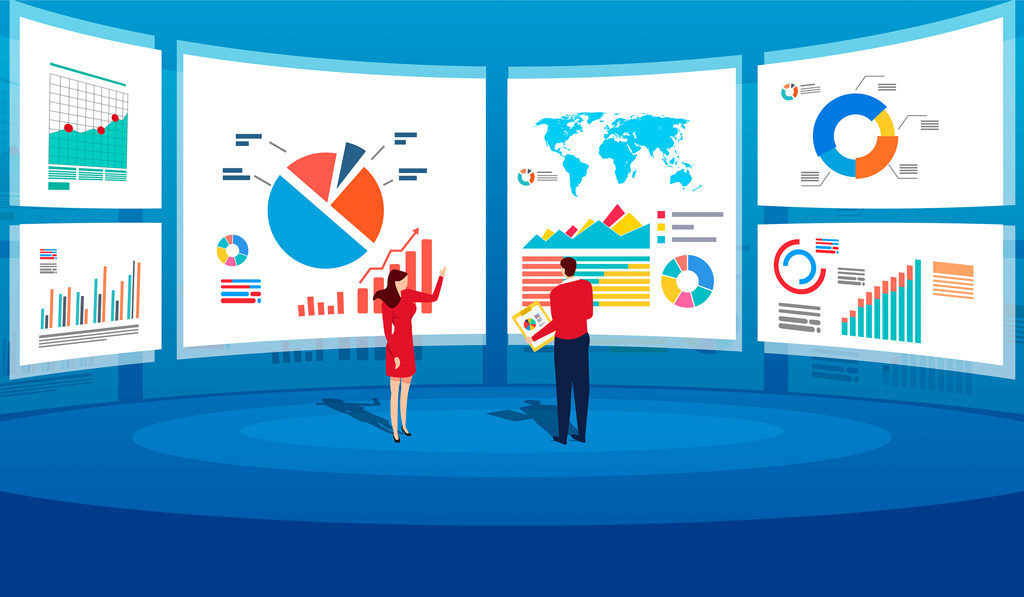
The way organizations are tackling customer service is Evolving to meet the needs of customers in a digital and rapidly changing world. Customers have certain wants and expectations for their customer service experience. Customers don’t want to answer the same question over and over, they don’t want to talk to a rudimentary bot that doesn’t understand their needs, and they don’t want to be transferred from person to person. When a customer is met with these hurdles, frustration builds and successful communication between the agent and the customer is hampered.
All the software developers, project managers, and other staff involved in an organization’s customer service solution have all been in the position of a customer. We have all been a customer somewhere, and we can all empathize with these frustrations. So, if that’s the case, then why were these systems designed this way in the first place? The simple answer is lack of sufficient technology, lack of usable data, and a lack of actionable insights from this data. However, the tide has now turned. Data is now more valuable than ever, and we are finally at a point with analytics, machine learning (ML), and artificial intelligence (AI) that we can gain deep insights into what a customer wants. We can now use data analytics and reporting to meet customer needs, and the result is a powerful improvement to the customer experience. Let us take a look at how businesses can use data, analysis, and reports to improve customer service.
Using and Collecting Data
Many businesses are operating with legacy IT systems that struggle to meet modern expectations of data collection and integration. Some organizations accommodate multiple different customer service channels that allow customers to communicate from different devices or through different mediums, for example, call, email, or live chat. It’s good practice to allow different methods of communication according to a customer’s preferences, however, this data needs to be consolidated. This is where the problem lies for many organizations. They may have an abundance of data on one customer, but it’s all siloed across different platforms, and held by different teams. Without bringing this data together, you’re only getting a partial picture of the customer which means you could be missing critical elements that would improve their customer experience.
Ideally, you want a customer service platform that is integrated across multiple channels and allows you to see a complete picture of the customer so you can best meet there needs. This means you know what they have purchased in the past, how they like to be communicated with, when they like to be contacted, what their loyalty status is, and what warranties they may have on a product. You could even take this one step further and capture how influential they are on social media.
There are also other useful data points that if captured, can improve your approach to customer service. For example, capturing how many requests are received per day, how many customer requests are closed per day, average response time, and the average time to close a ticket can all help you make important decisions about your customer service strategy.
When collecting data, you should be thinking of how it can help you close the “customer service gap”. In 2005 a landmark study called “Closing the delivery gap” found that 80% of companies believe they deliver superior customer service, but only 8% of customers believe they have received excellent service. This gap is huge and displays a massive disconnect between what a company believes they are delivering and how that customer service is actually delivered in practice. Collecting important data is one key way of closing this gap because it forces you to see the reality of the situation.

Reports And Analysis
Once you’ve collected the data, it’s time to generate reports and analyze the data. A Key 2018 study by MITSloan found some compelling trends by companies that utilize analytics.
- A competitive advantage: 59% of managers say they are using analytics to gain a competitive advantage, and this figure is up from previous years. This shows there has been a shift towards a more analysis focused approach to customer service and more and more companies are looking to analytics to get closer to customers.
- Improving customer engagement: Companies that have mature data analysis solutions saw an improvement in their customer relationships. In fact, analytically mature organizations were twice as likely to say they had strong customer engagement than the least analytically mature companies.
- Increasing influence: sharing data with customers, government agencies, vendors, and the public increases the organization’s influence with customers and stakeholders. People like companies who are transparent with their data.
Generating reports is made easier if you have an Omnichannel approach to customer service. This is because when all of your customer communications are managed from one single point, data collection is also streamlined and therefore much easier. An Omnichannel customer service platform, like Commbox, utilizes AI and Machine learning algorithms to make the best use of your customer data. By doing this, Commbox can route the customer to the best communication channel, and the best agent for the job. However, you don’t have to leave all of this up to an invisible algorithm operating in the background. Commbox also comes equipped with an analytics and reporting system that allows you to monitor every aspect of your communications.
Outpacing the Competition By Using Reporting to Create a Better Future
Setting yourself apart from the competition is something the majority of businesses are focused on. You want customers to think of you before your competition, whether that’s because you offer cheaper products and services, higher quality products and services, or because you offer a superior customer experience.
One way to outpace the competition is to offer a seamless, engaging, fit for purpose, and easy to use customer service platform that will bolster your customer loyalty. A 2016 study found that customers said the most important attribute of the customer experience was fast response times, with 75% of customers ranking this as the most important element. So, when a customer has an issue, they want it resolved fast. Response times should be a key metric that you report on. Fast response time is a metric that businesses all over the world are now shifting their focus to, so you should make it a priority or risk being left behind. A huge study by Livechatinc found that average response time has been going up year on year. In 2016, the average first response time from the companies studied was 56s. In 2017 it was 5 seconds fast at 51s, and in 2018, it was 3 seconds faster again at 48 seconds.
Consistency across channels was ranked second, with 55% of customers saying this was the most important attribute to the customer experience for them. This is where having a consolidated and consistent approach, such as what can be achieved with an omnichannel platform is so important. Customers should always feel that they are interacting with your company and your brand, no matter what the communication preference. There shouldn’t be an inconsistency with how you deal with customers on email, call, or text – and having all communications in one platform is an excellent way to tackle this.
52% of customers said Knowledgable staff was the most important attribute to the customer experience for them. To tackle this need, you can use data collection, reporting, analytics, and AI to route the most appropriate agent to that customer. Different agents will have different specializations, and you should always try to utilize this in your customer service strategy. It’s both more fulfilling for the agent, and more satisfying for the customer.
Your customer service reporting should also capture how many tickets your business handles in one month. This figure appears to be dropping. In 2017, the average business that 52 tickets monthly, and in 2018, they had an average of 49. This suggests that organizations are getting better at meeting customers’ needs in a variety of ways, which keeps the number of complaint-form tickets down.
The demand for live chat services is also increasing year on year, so the success of your chat channels should be captured in your reporting. You can capture data like how long a customer had to wait for a response, what times in the day were the most popular for chat communication, and so on. You can then use these reports to alter your customer service strategy to stand up more agents during peak times, add more chat functionality, or extend the operating hours.

Improving Agent Productivity
Customers are happier when they are served by happier and more productive customer service agents. You can use data analysis and reporting to allow agents to see their own performance scores, manage appropriate shift patterns, and see which agents perform best in which areas. This not only allows you to put the most appropriate agent in contact with the customer but also allows you to take control of the agent’s skill progression and develop their career goals.
Retention vs Acquisition
Studies have shown that the probability of selling to an existing customer is between 60% and 70%, whereas the probability of selling to a new customer is 5-20%. Reports can tell you which selling approaches are most successful with new customers, and which are most successful with existing customers.
Having a seamless customer service platform that puts the customer’s needs first will help push you to the top of both probabilities. Adding to this, using reports to continually manage your customer service strategy will help you decide what can stay and what needs to change.
Small and Medium Sized Businesses
Small and medium-sized businesses have historically struggled to keep up with the competition when it comes to the adoption of newer technology like live chat services. Without a dedicated IT team, and with limited time and expertise in the area themselves, small business owners often find themselves forgoing these systems. However, in the digital age, it’s easier than ever for small businesses to utilize the huge advancements made in data science, and they are sometimes even at an advantage here. The age of data has ushered in powerful data collection and analysis tools that are affordable and highly scalable. This means small and medium-sized businesses can now have access to the same technology and analytical insights that historically were only available to larger organizations. Adding to this, larger organizations often have to battle with legacy IT systems and old technology that can’t communicate or integrate. This means they either have to overhaul the whole system or find ways to get the technology to talk to each other. Sometimes this is a simple fix, and other times it can be expensive and time-consuming. This is a problem that small and medium-sized businesses simply don’t have.
Don’t leave your customer service approach to chance! Collect data on your customers, generate reports, conduct analysis, and take action to improve your customer service experience for your customers.